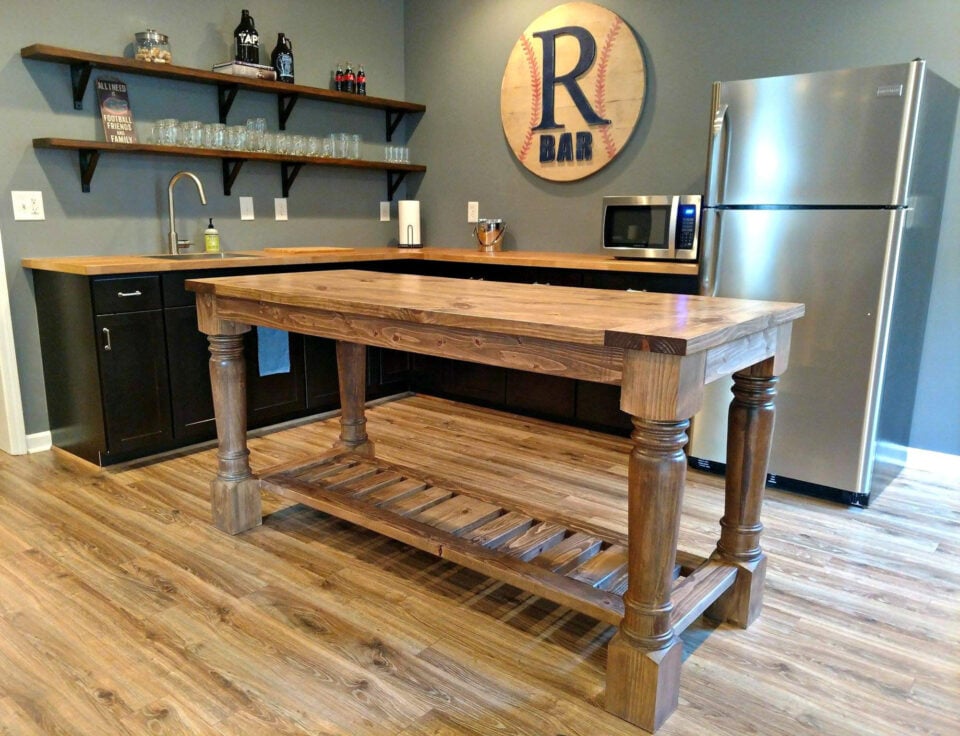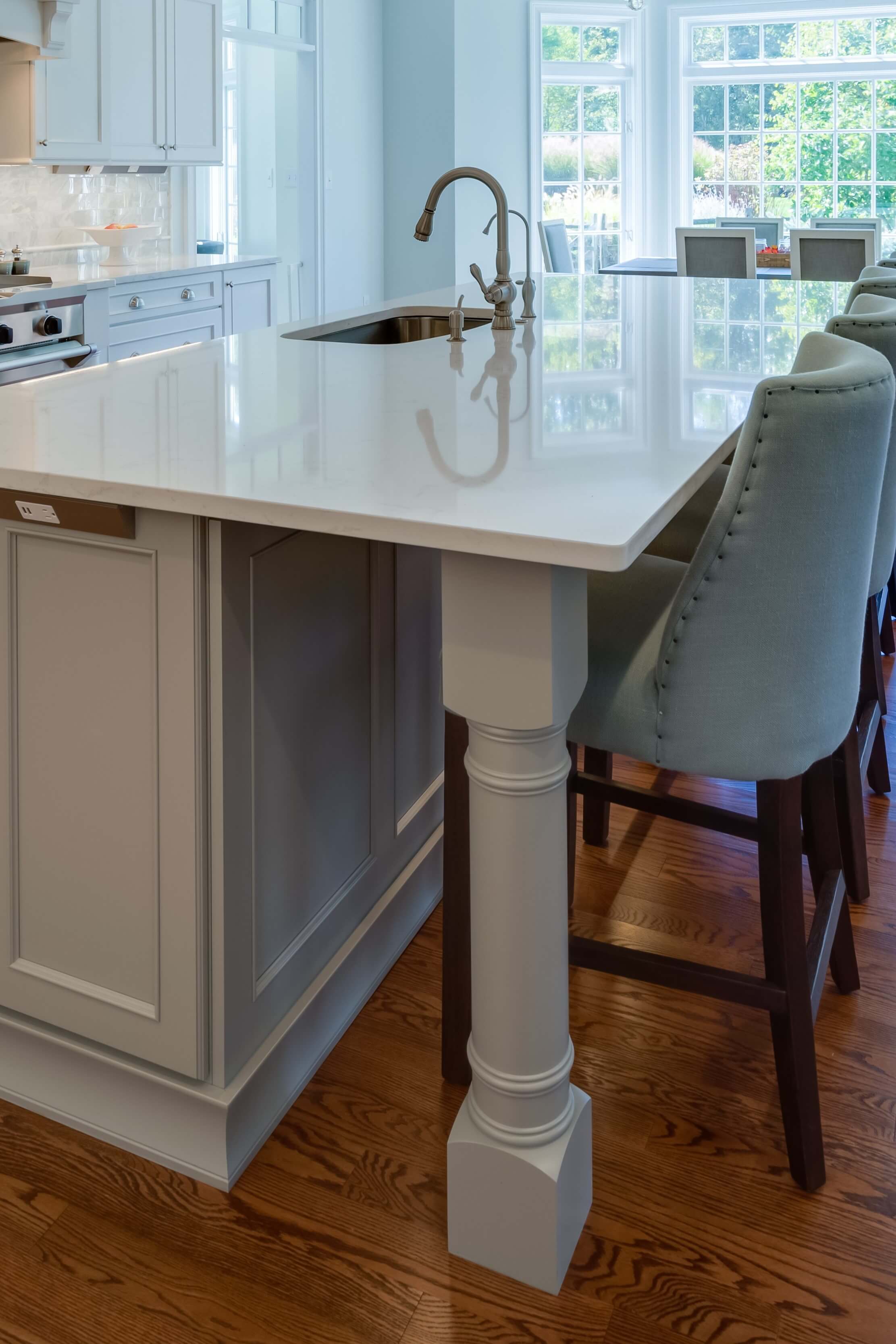Picking the Ideal Kitchen Island Leg for Resilience and Capability
Wiki Article
Exactly How to Select the Perfect Cooking Area Island Leg to Boost Your Kitchen Area Layout
Choosing the suitable kitchen area island leg is a nuanced procedure that needs cautious factor to consider of various aspects such as style product, style, and capability. An appropriate leg can not just sustain the framework yet additionally serve as a defining aspect that boosts the total visual of your cooking area.Examine Your Cooking Area Design
When it concerns selecting a kitchen island leg, it's important to assess your kitchen style to guarantee a natural layout. The cooking area is typically the heart of the home, and the island functions as a aesthetic and practical centerpiece. The selection of leg style ought to mirror the overall theme of your cooking area, whether it be modern, typical, farmhouse, or commercial.As an example, in a contemporary kitchen, smooth, straight legs in a minimalist layout may improve the structured look. Conversely, a rustic kitchen may take advantage of hefty, turned legs that share heat and personality. Think about intricately developed legs that echo typical workmanship. if your cooking area includes a traditional style.
Pay attention to the proportions of both the island and the surrounding area; the leg's scale must complement the overall measurements. By aligning your leg option with your kitchen's design, you produce a linked and inviting atmosphere that mirrors your individual aesthetic.
Consider Product Options
Selecting the ideal product for your kitchen island leg is crucial, as it affects both sturdiness and aesthetic appeal. Different products use distinctive benefits and can dramatically influence the general style of your kitchen area.Wood is a prominent option, recognized for its heat and versatility. It can be stained or painted to match your kitchen's color pattern, giving a classic look. It might need more maintenance to protect against damages from wetness and heat.
Steel legs, such as stainless-steel or functioned iron, stimulate a industrial and contemporary feeling. They are unbelievably resilient and immune to damages, making them suitable for high-traffic locations. Metal can also be ended up in different ways, enabling customization in regards to texture and shade.
One more alternative is composite products, which integrate looks with usefulness. These can resemble the look of timber or metal while often being lighter and easier to keep.
Lastly, take into consideration stone legs, which can bring a lavish touch but might need added architectural support. Each product has its unique features, so it's necessary to choose one that aligns with your cooking area's total layout vision while making sure long life and capability.
Explore Design Attributes
Numerous style functions can improve the capability and aesthetic appeal of a cooking area island leg, making it an integral component of the general kitchen area layout. One key aspect to consider is the design of the leg, which can range from standard transformed layouts to smooth, modern lines. The choice of style must match the existing cabinetry and components, creating a cohesive look.In enhancement to style, the finish of the leg can substantially affect the kitchen's visual allure. Alternatives such as repainted, tarnished, or natural surfaces can either highlight the leg as a declaration item or enable it to blend seamlessly right into the kitchen atmosphere. Attractive aspects, such as embellishments or makings, can likewise include personality and originality, transforming a simple leg right into a focal point.
In addition, integrating useful attributes like open shelving or incorporated storage space can boost utility while preserving visual value. The interplay of these style features not only boosts the kitchen area island leg's appearance but also adds to the overall functionality of the kitchen area area. By attentively selecting these components, home owners can guarantee their kitchen area island leg offers both useful and ornamental functions.
Determine Dimension and Height

Normally, the typical height for kitchen island legs is around 30 inches, which straightens with the height of basic kitchen counters and dining surface areas. However, if your her comment is here island offers a twin function, such as a breakfast bar, you might think about a greater leg gauging 36 inches. This height promotes a much more informal eating experience and accommodates bar stools comfortably
In regards to width, the leg ought to not only offer appropriate assistance yet likewise preserve visual balance. A width of 3 to 5 inches is normally excellent, enabling for sufficient stability without subduing the total style. Furthermore, consider the spacing in between the legs; they should be positioned to enable very easy activity and accessibility around the island.
Eventually, taking accurate dimensions and considering the meant use the kitchen area island will assist you in picking the proper size and elevation of the legs, making sure both visual charm and sensible functionality in your kitchen area style. kitchen island leg.
Budgeting for Your Selection

Following, identify the design that aligns with your kitchen's aesthetic. Custom-designed legs may come with a costs, while pre-fabricated options normally use cost financial savings. It's necessary to stabilize your wanted visual with the practicalities of your budget plan.
Consider extra expenses that may occur, such as setup or finishing. If you're planning to hire a professional for installation, consist of these expenses in your budget plan.
Last but not least, assign a contingency fund for unexpected prices that may emerge during the improvement. By very carefully reviewing these aspects, you can make explanation informed choices that not just boost your cooking area's style yet additionally keep your remodelling within economic reach. A well-planned spending plan will certainly guarantee that you accomplish the wanted look without jeopardizing your economic goals.
Final Thought
To conclude, picking the suitable kitchen area island leg requires cautious factor to consider of different factors, including the general cooking area style, product alternatives, layout features, and ideal dimensions. By aligning these elements with the wanted aesthetic and functionality, a visually enticing and harmonious kitchen area island can be accomplished. Furthermore, budgeting for the picked products and setup will certainly ensure that the selection process continues to be possible and useful, eventually improving the kitchen's layout and use.When it comes to picking a kitchen area island leg, it's essential to assess your kitchen style to ensure a cohesive layout.Countless design functions can improve the performance and visual allure of a cooking area island leg, making it an important part of the total kitchen layout. The interplay of these style includes not just elevates the cooking area island leg's look but additionally adds to the general go now capability of the kitchen area room.Developing a budget for your kitchen island leg is a crucial action that can considerably affect your total kitchen area remodelling prices.In conclusion, selecting the ideal kitchen area island leg necessitates cautious factor to consider of numerous variables, including the general kitchen area design, material choices, layout functions, and appropriate dimensions.
Report this wiki page